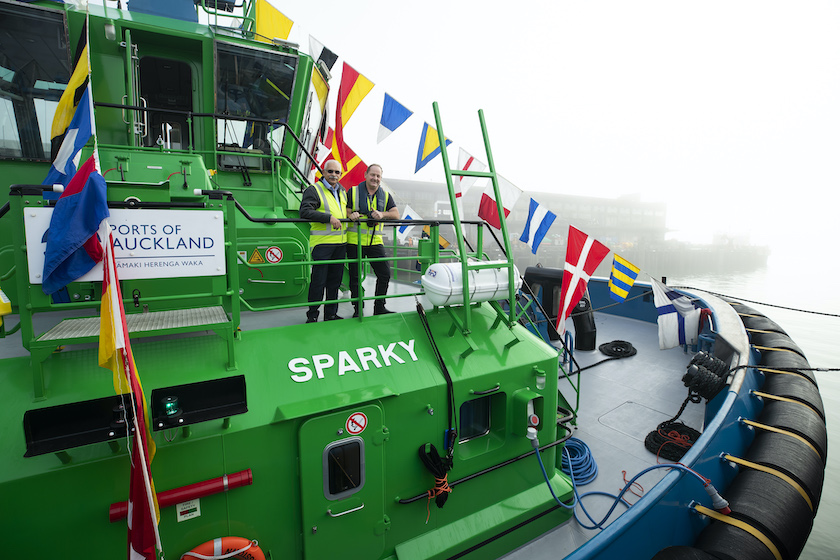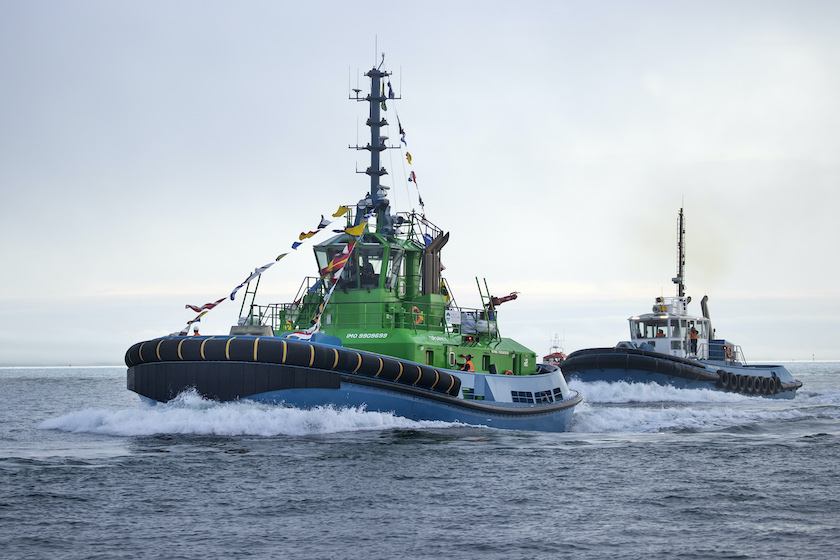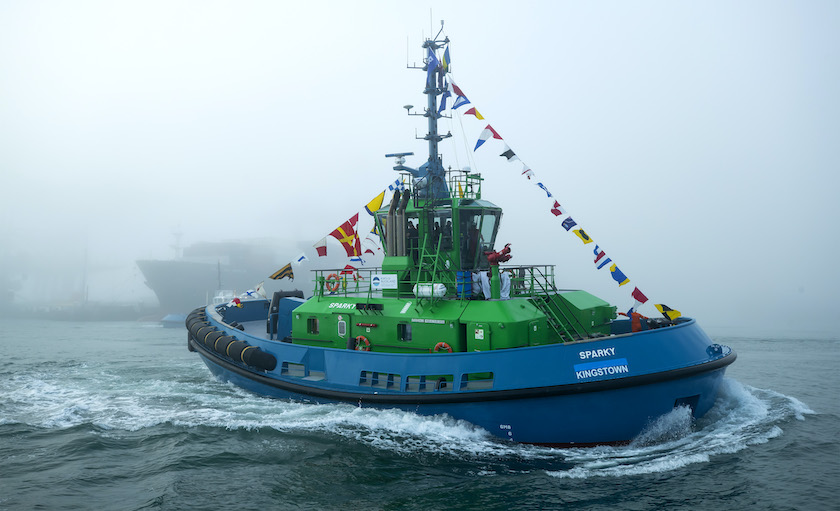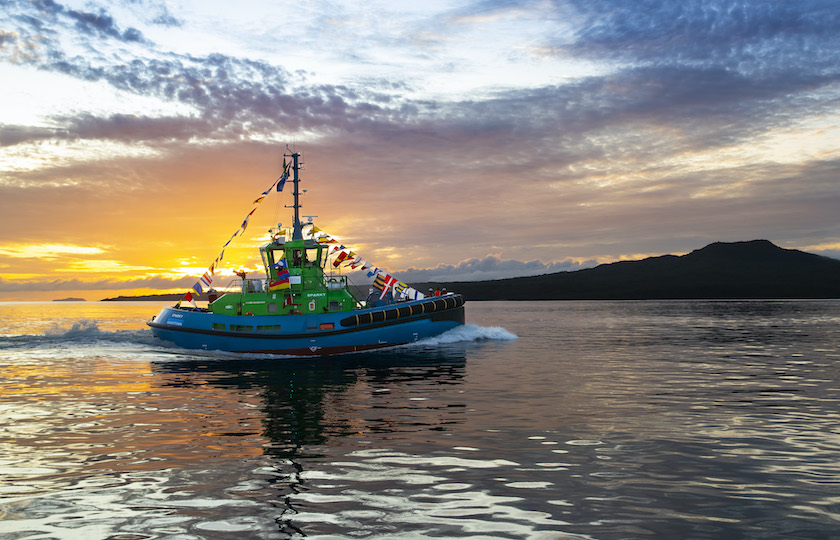The world’s first full-sized all-electric tugboat is completing its final pre-service sea trials on Auckland’s Waitemata Harbour.
Six years after the idea was conceived, and two years after the tugboat was named in a public competition, ‘Sparky’ sailed into the harbour of New Zealand’s largest city this month, shrouded in fog.
“Back in 2016, when we first pitched the idea for a fully electric tug, we were told we were dreaming,” said Allan D’Souza, GM marine and multi-cargo operations at Ports of Auckland, who led the project to fruition. “To see Sparky in real life like this is that dream coming true.”

What’s most remarkable about Sparky is that its power and strength are as great as that of a traditional diesel-powered tugboat – but with a fraction of the environmental impact.
Ports of Auckland says Sparky – aka the first Damen RSD-E Tug 2513 – has a 70-tonne bollard pull (that’s the way the industry rates a tugboat’s strength) which is identical to that of the port’s strongest existing tugboat, called Hauraki.
It is fitted with 80 battery racks holding 2240 batteries, that provide 2784 kWh of power.
Sparky is designed to complete up to four shipping moves on a single charge of its batteries – and a full recharge takes just two hours. For emergencies – and to ensure operational safety – Sparky is fitted with two 1000kW backup generators which Ports of Auckland says will be used at most twice annually.

The switch to all-electric is calculated to save around 465 tonnes of CO2 in diesel emissions annually. Better still, it will cost the port authority less than one-third as much to operate as Hauraki.
Locals will be able to spot Sparky on the water by its distinctive green and blue colour scheme.
“What you won’t notice is noise or smoke; being electric she’s a lot quieter and cleaner, than our current diesel tugs,” adds D’Souza.
Given Sparky is the first of its kind in the world, designing and building the tugboat was a challenge for Netherlands-based engineering partner Damen and the port’s marine team.
“When the project started there were no emissions-free ship-handling options around,” said Roger Gray, Ports of Auckland’s CEO. “However, Damen was up for the challenge and now they’ve changed the game with Sparky.

“E-tugs are the future for ship handling and Ports of Auckland is proud to have led the way,” says Gray.
“Sparky was a truly innovative project for us. Her arrival marks a big step towards the ports’ decarbonisation of operations and towards our long-term emissions reduction goals.”
New Zealand is fast embracing electric vessels. An all-electric passenger ferry entered service in the capital city, Wellington, last year and a larger hybrid ferry is under construction for Auckland.



